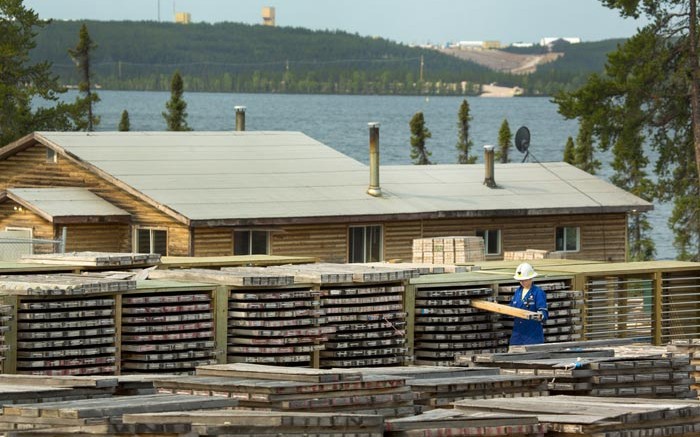After some false starts in past years, an uptick in uranium prices may truly be around the corner, and this time analysts are more confident any rise will reflect a balance between demand and supply.
“We understand that we have been wrong for a few years, and what we are pointing at now is the fact that global uncovered requirements become pretty large in 2017–18,” Cantor Fitzgerald analyst Rob Chang says. “Many analysts, including myself, had been calling for higher prices for a while, but the main reason why that hasn’t happened is because utilities don’t need to buy — they’re satisfied. That will change in 2017–18, and we believe that there will be more activity.”
Heavy contracting by utilities from 2005 to 2010 has delayed the price hike, Chang explains. Utilities operate “entirely on a security of supply view,” so when prices are high they believe there is less available, and lock in demand ahead of time to ensure they have enough to operate the reactors. Conversely, when prices are low, they contract less and are comfortable with buying uranium in the spot market.
Available global inventory also weighs down spot U3O8 prices, but it will help when former long-term contracts “roll off,” along with the anticipated rise in global demand.
“The supply has been less than demand for quite a while, but there has been so much excess inventory that the prices have been low,” Chang says.
Given there is no official system for countries to report inventory, it is hard to determine what amount is “mobile” or in useable form, and not considered strategic stockpiles. Also complicating the picture is secondary supply.
The current estimate for global inventory, including stockpiles, is 500 million lb., Chang says. He anticipates 2015’s primary supply at 156 million lb. U3O8, versus demand of 179 million lb.
Based on available information, and utilities increasing their contracts since 2013, Chang forecasts the uranium market is about to heat up.
The analyst projects demand in 2017 and 2018 of 198 million lb. and 201 million lb., with global uncovered requirements of 25 million lb. in 2017 and 40 million lb. in 2018. This reflects a 13% shortfall for utilities in 2017 and 20% for the following year.
“From our conversations with Cameco they have mentioned that when utilities become 20% uncovered they tend to get uncomfortable, and that is scheduled to happen in the 2017 to 2018 period. We expect to see increased activity among utilities to buy their requirements sooner rather than later,” Chang says, pointing out that historically utilities have bought supply three years in advance, because it takes time to convert the purchased U3O8 into “reactor-ready fuel assemblies.”
Many uranium producers are only producing to fulfill their long-term contracts priced at more than US$50 per lb., because it would be uneconomic for them to produce at the US$44 per lb. term contract price, Chang adds. Considering the higher-priced contracts should end soon, many utilities would need to secure more supply.
“Utilities tend to have a short period of time now … to acquire the uranium they need for loading into the reactors at the appropriate time. We believe that prices will probably move within the next six to 12 months … based on simple supply and demand,” Chang reckons.
The analyst forecasts spot prices per lb. to average US$48.75 in 2016, US$60 in 2017, US$70 in 2018 and US$80 in 2019. “That’s a pretty big jump from the current mid-thirties that we are seeing.”
While the restart of reactors in Japan will help absorb surplus inventory in the market, Chang points out China will play a bigger role in the increased demand.
Japan — which took all of its reactors offline after the 2011 Fukushima nuclear disaster — has slowly restarted two reactors (Sendai 1 and Sendai 2) this year, with Chang anticipating another five to come back online by the end of 2016.
China has 29 operating reactors on the mainland and more than 20 reactors under construction, with many more planned. It aims to double its nuclear capacity by 2020, according to the World Nuclear Association.
“That’s probably the bigger story, and regardless of what happens in Japan, there will still be an excess of demand oversupply in the future,” Chang says.
Stock picks with a ‘buy’
Cameco (TSX: CCO; NYSE: CCJ) is one of Chang’s preferred names, with high-grade Canadian operations in the “best address.” The producer operates the Cigar Lake, McArthur River and Rabbit Lake uranium mines in Saskatchewan’s Athabasca basin. It also runs the Smith Ranch-Highland and Crow Butte operations in the U.S. and has a 60% interest in the Inkai in-situ recovery uranium mine in Kazakhstan. The company has taken a beating lately, with its shares trading at five to six times forward cash flow, while post-Fukushima they traded near the 11- to 13-times range, Chang says. He has a $26.05-per-share target.
Uranium Participation (TSX: U) is a “good company” to look at for those who want exposure to the commodity ahead of the expected rise in prices, Chang says. The company holds physical uranium oxide and uranium hexafluoride, and has “typically traded at a discount to net asset value (NAV), so there is certainly upside in there for it to just reach par. Historically in periods of hot uranium markets, Uranium Participation tends to trade at above its NAV, so there is that to look forward to as well, once the uranium market heats up.” Chang has a $7.95 target on the stock.
The analyst’s other preferred names include U.S.-focused junior producers Ur-Energy (TSX: URE; NYSE-MKT: URG), with a $2.15 target; and Energy Fuels (TSX: EFR), with a $11.85 target.


In May 2016 with the spot price at $25/lb,
this article seems like nonsense.
With Chang’s estimate of global inventories
approaching 500 million pounds, there
seems little reason for utilities to abandon
the spot market for higher priced long-term contractss